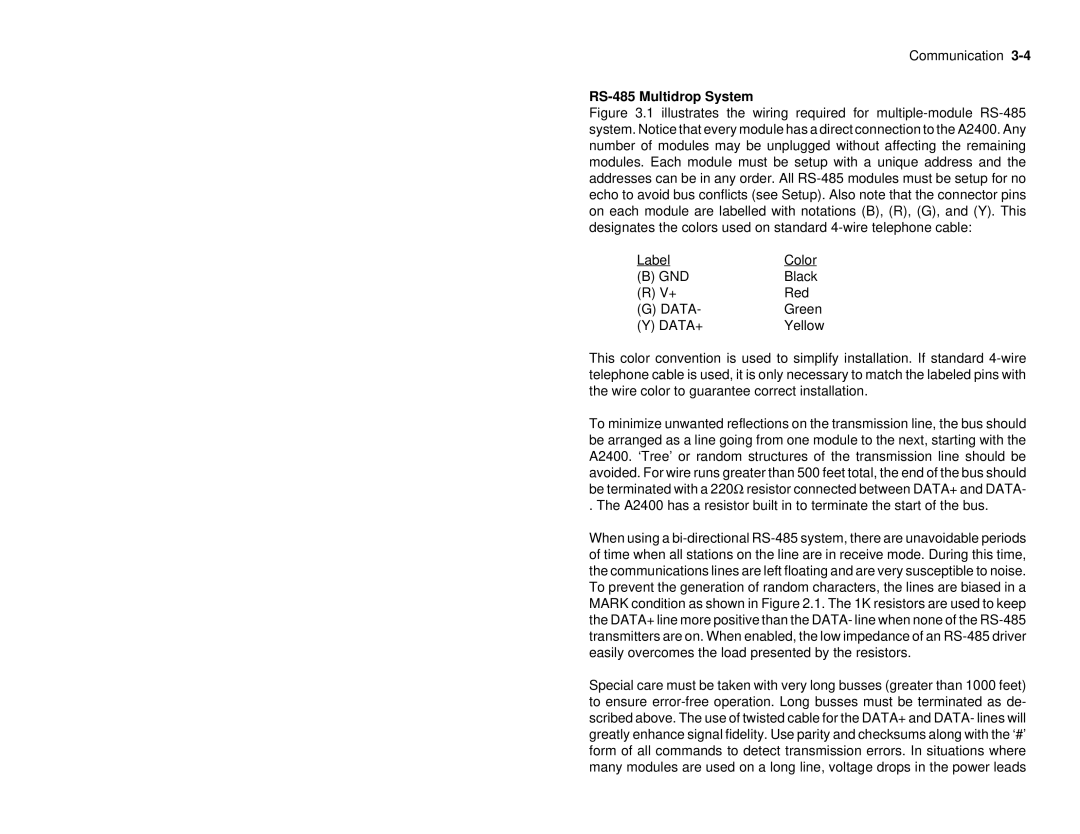Communication 3-4
RS-485 Multidrop System
Figure 3.1 illustrates the wiring required for multiple-module RS-485 system. Notice that every module has a direct connection to the A2400. Any number of modules may be unplugged without affecting the remaining modules. Each module must be setup with a unique address and the addresses can be in any order. All RS-485 modules must be setup for no echo to avoid bus conflicts (see Setup). Also note that the connector pins on each module are labelled with notations (B), (R), (G), and (Y). This designates the colors used on standard 4-wire telephone cable:
Label | Color |
(B) GND | Black |
(R) V+ | Red |
(G) DATA- | Green |
(Y) DATA+ | Yellow |
This color convention is used to simplify installation. If standard
To minimize unwanted reflections on the transmission line, the bus should be arranged as a line going from one module to the next, starting with the A2400. ‘Tree’ or random structures of the transmission line should be avoided. For wire runs greater than 500 feet total, the end of the bus should be terminated with a 220Ω resistor connected between DATA+ and DATA-
. The A2400 has a resistor built in to terminate the start of the bus.
When using a
Special care must be taken with very long busses (greater than 1000 feet) to ensure
